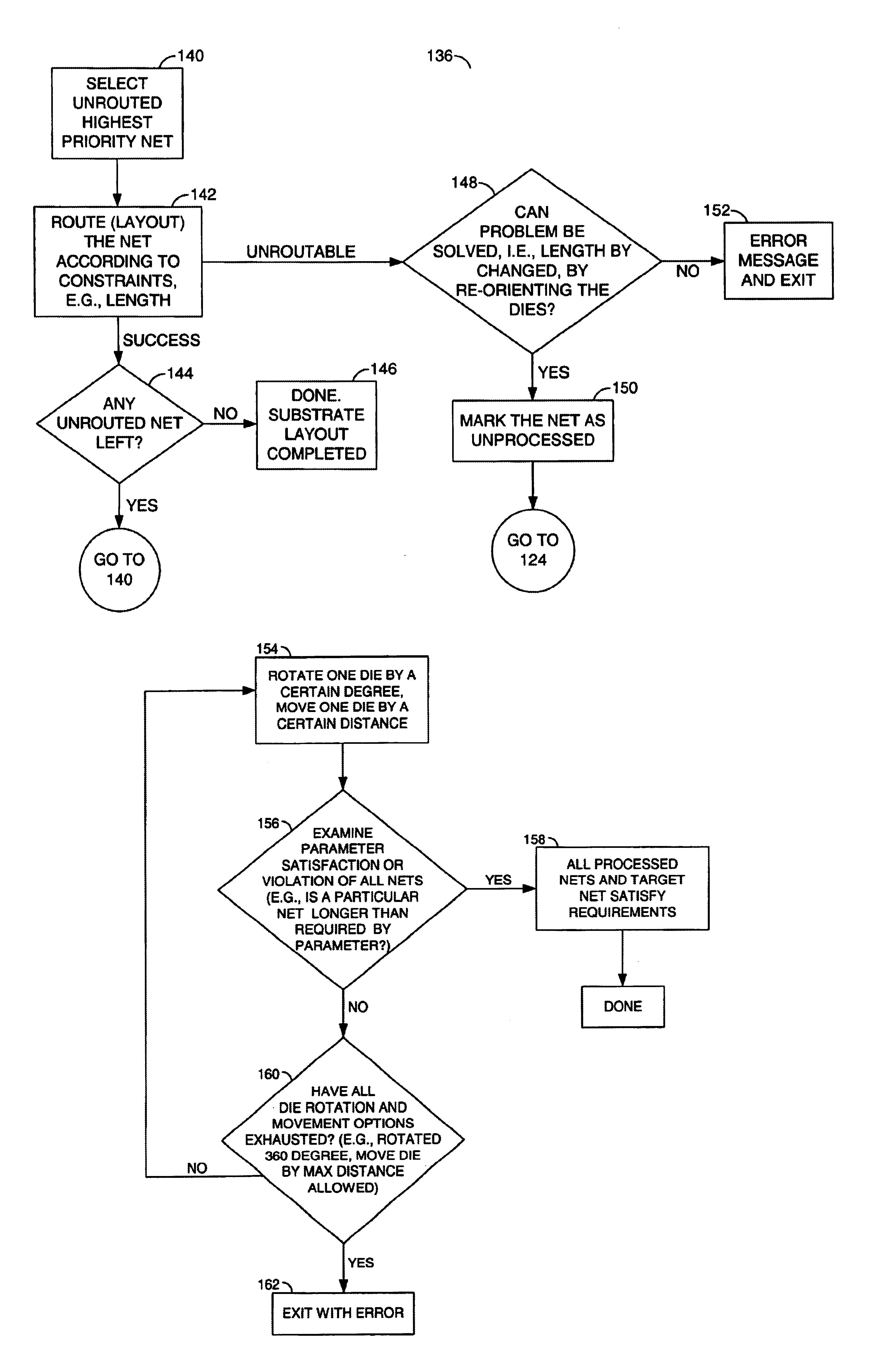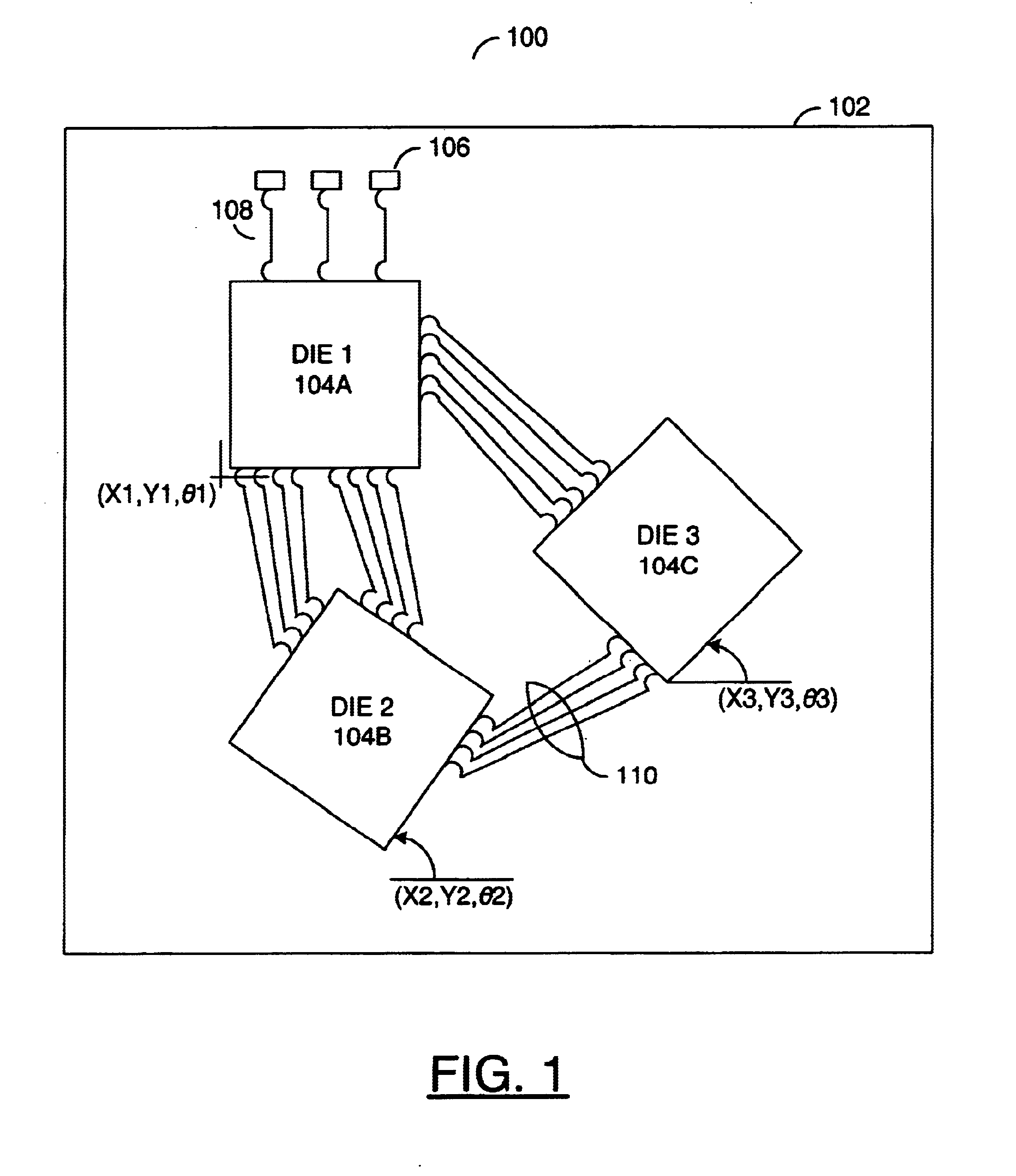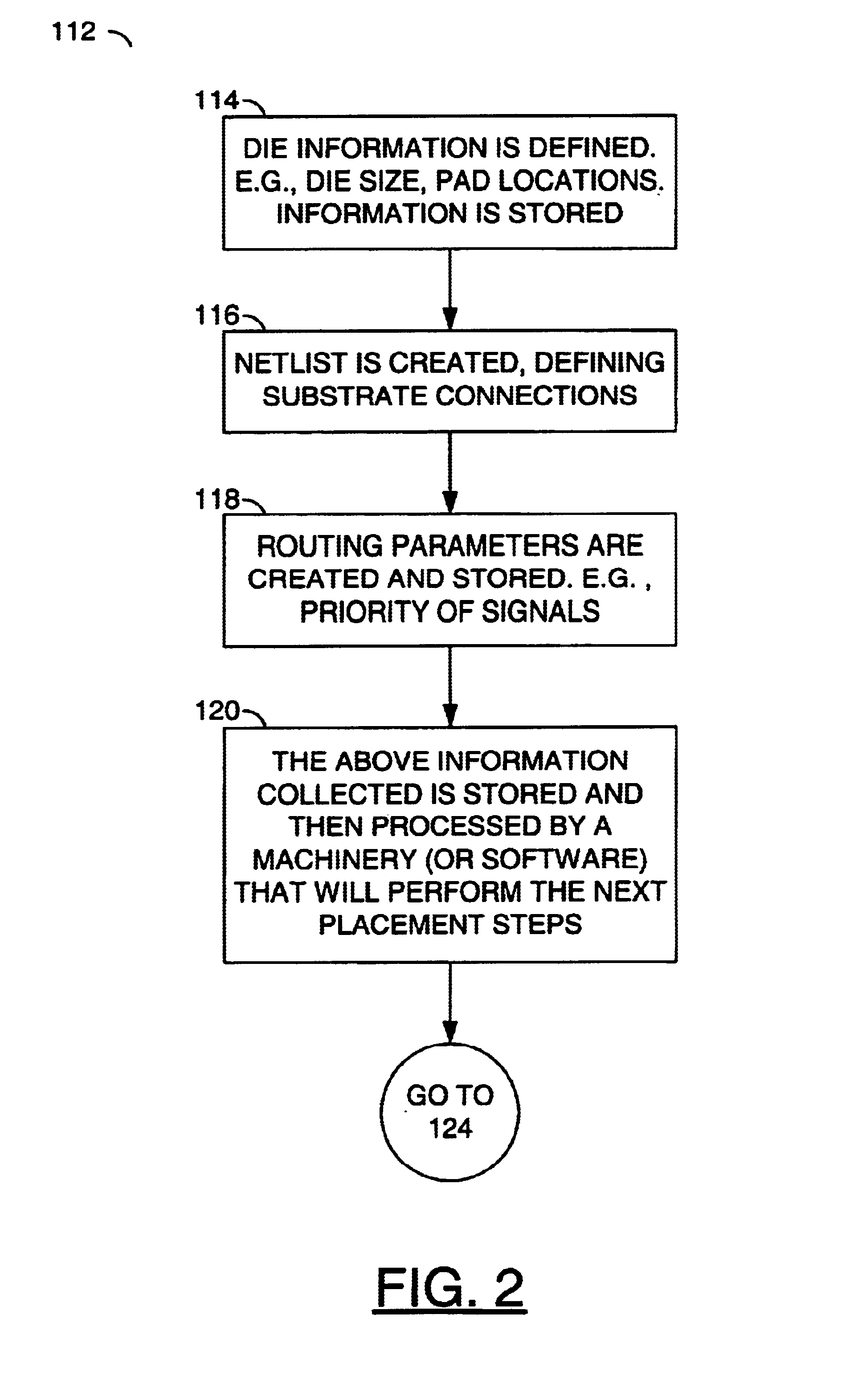Method for determining die placement based on global routing architecture
- Summary
- Abstract
- Description
- Claims
- Application Information
AI Technical Summary
Benefits of technology
Problems solved by technology
Method used
Image
Examples
Embodiment Construction
The invention generally defines a die placement process for determining optimal die placement and die angles in a multi-chip package where the dies may be relatively rotated from the perspective of traditional Cartesian approach in which the dies are placed in a rigid imaginary x-y coordinate system. The process may orient some or all of the dies non-parallel and non-perpendicular to the x-y axes. The process may also result in die angles of 0, 90, 180, 270, and 360 degrees relative to the x-y coordinate system.
The process for determining relative die placement and die angles on the substrate may minimize routing complexity, increase routing space, and reduce trace lengths. The process may achieve the above by taking into account various routing requirements, rules and parameters for substrate connections and then finding the appropriate placement and angles. The dies in the package are generally existing dies with information at least sufficient for the die placement process define...
PUM
 Login to View More
Login to View More Abstract
Description
Claims
Application Information
 Login to View More
Login to View More - R&D
- Intellectual Property
- Life Sciences
- Materials
- Tech Scout
- Unparalleled Data Quality
- Higher Quality Content
- 60% Fewer Hallucinations
Browse by: Latest US Patents, China's latest patents, Technical Efficacy Thesaurus, Application Domain, Technology Topic, Popular Technical Reports.
© 2025 PatSnap. All rights reserved.Legal|Privacy policy|Modern Slavery Act Transparency Statement|Sitemap|About US| Contact US: help@patsnap.com



